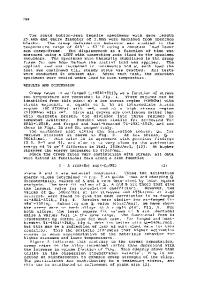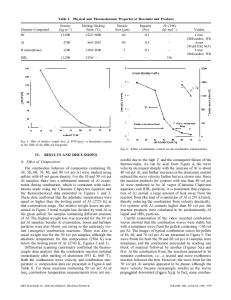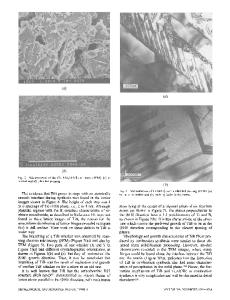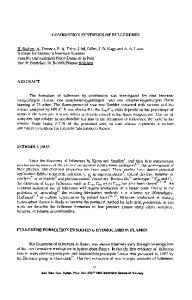Gas-phase combustion synthesis of titanium boride (TiB 2 ) nanocrystallites
- PDF / 304,107 Bytes
- 7 Pages / 612 x 792 pts (letter) Page_size
- 70 Downloads / 413 Views
MATERIALS RESEARCH
Welcome
Comments
Help
Gas-phase combustion synthesis of titanium boride (TiB2 ) nanocrystallites R. L. Axelbaum, D. P. DuFaux, and C. A. Frey Department of Mechanical Engineering, Washington University, St. Louis, Missouri 63130
K. F. Kelton Department of Physics, Washington University, St. Louis, Missouri 63130
S. A. Lawton McDonnell Douglas Aerospace, St. Louis, Missouri 63166
L. J. Rosen and S. M. L. Sastry Department of Mechanical Engineering, Washington University, St. Louis, Missouri 63130 (Received 19 June 1995; accepted 1 December 1995)
Two techniques are described for synthesizing nanometer-sized TiB2 particles by gas-phase combustion reactions of sodium vapor with TiCl4 and BCl3 : a low-pressure, low-temperature burner and a high-temperature flow reactor. Both methods produce TiB2 particles that are less than 15 nm in diameter. The combustion by-product, NaCl, is efficiently removed from the TiB2 by water washing or vacuum sublimation. Material collected from the low-temperature burner and annealed at 1000 ±C consists of loosely agglomerated particles 20 to 100 nm in size. Washed material from the high-temperature flow reactor consists of necked agglomerates of 3 to 15 nm particles. A thermodynamic analysis of the TiyByClyNa system indicates that near 100% yields of TiB2 are possible with appropriate reactant concentrations, pressures, and temperatures.
I. INTRODUCTION
Nanophase materials have been shown to exhibit significant improvements in fracture stress and ductilities over their coarse-grain counterparts.1–3 In both monolithic and composite nanophase materials, increases in strength can be expected due to restrictions in dislocation generation and mobility imposed by the small grain size.4 Increased fracture toughness is expected because small slip lengths and the existence of a large number of grain boundaries cause stress concentrations at crack tips to be significantly reduced.5 However, the nanostructure that produces dramatic increases in strength and toughness at low and moderate temperatures in monolithic materials may result in mechanical property degradation at higher temperatures because diffusion and grain boundary sliding become dominant operative deformation mechanisms.6 Ultrafine grain size is detrimental for high-temperature creep resistance because of the inverse dependence of creep rate on square and cube of grain size when creep is controlled by Nabarro–Herring and Coble creep.6 Thus a central issue in the use of nanophase materials in high-temperature applications is how to counteract the apparent deleterious effect of fine grains on high-temperature mechanical properties. In nanocrystalline composites, fine secondphase particles can serve to retard grain growth through the Zener mechanism of grain boundary pinning, and 948
http://journals.cambridge.org
J. Mater. Res., Vol. 11, No. 4, Apr 1996
Downloaded: 25 Mar 2015
they can stabilize the dislocation cell size to prevent recrystallization. For example, when reinforced with up to 4 vol. % of nanosc
Data Loading...











